There’s just something about the sizzle of sausage mingling with vibrant peppers that makes dinner feel like an event. This Sausage and Peppers Skillet Recipe is a perfect example—simple ingredients coming together for a comforting, colorful meal you'll want to make again and again.
Jump to:
Why You'll Love This Recipe
Honestly, I can’t get enough of this Sausage and Peppers Skillet Recipe. It’s one of those dishes that feels like a warm hug after a long day—hearty, fragrant, and packed with flavor. Plus, it all comes together in just one pan, which makes cleanup such a breeze.
- Simple One-Pan Cooking: Everything cooks right together, which means less fuss and more time to relax.
- Versatile Flavors: You can make it mild or spicy depending on your mood or guests.
- Fresh and Colorful: The mix of peppers, onions, and fresh basil adds such inviting colors and brightness.
- Comfort Food, Elevated: With just a touch of balsamic and parmesan, it’s familiar but feels special.
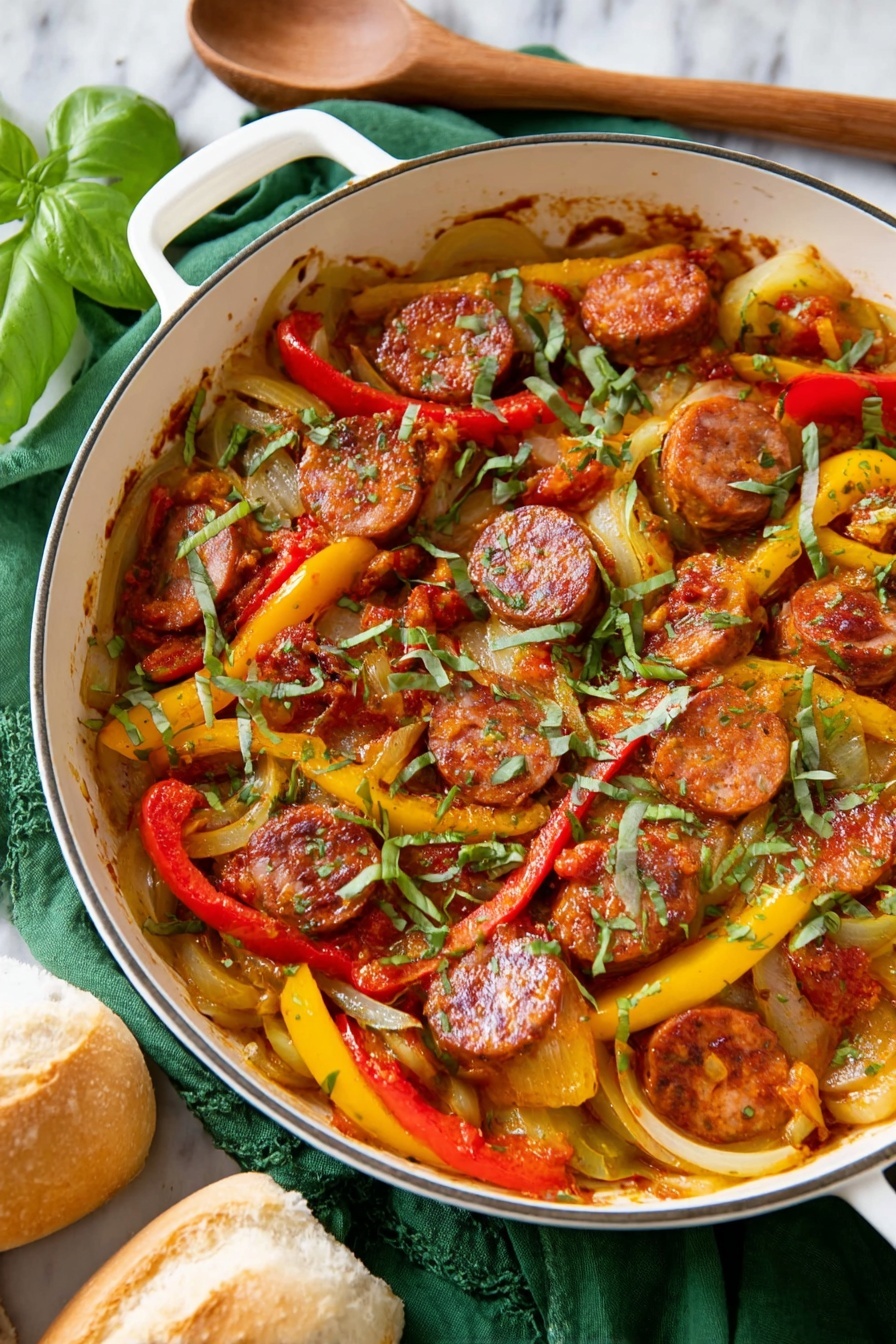
Ingredients & Why They Work
Every ingredient here plays a part in creating the perfect harmony of flavors. Choosing quality sausages with the right seasoning gives you that rich base, while fresh bell peppers and onions bring a sweet crunch. The tomato paste and broth build a tasty sauce, and the final parmesan and basil? Pure magic.
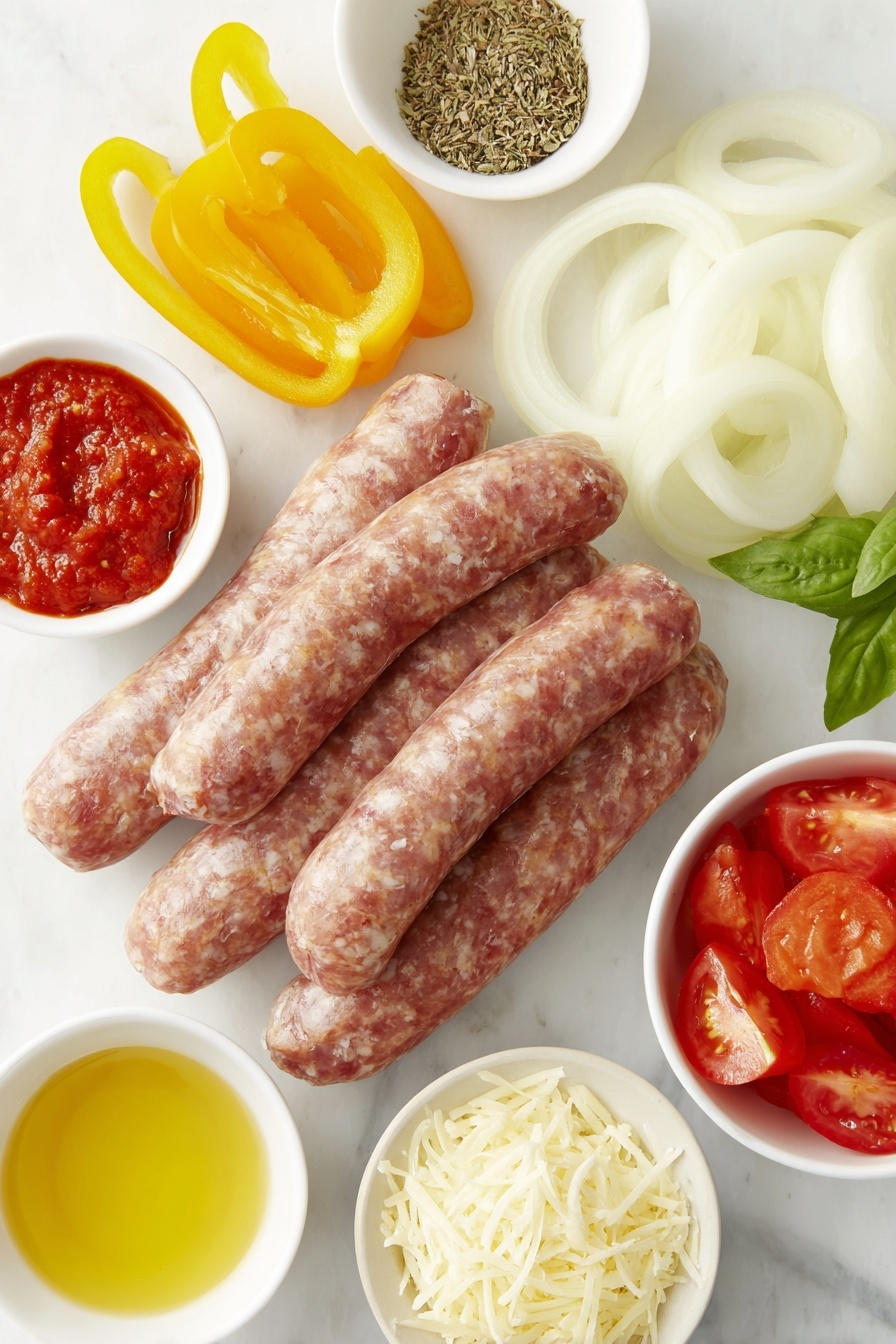
- Italian sausage links: I like to use a mix of spicy and mild to keep everyone happy—but feel free to pick whatever suits your taste.
- Olive oil: For that luscious, slightly fruity base when browning the sausage and veggies.
- Bell peppers: Red and yellow bring sweetness and vibrant color; green works too if you prefer.
- Yellow onion: Adds natural sweetness and depth when sautéed with those peppers.
- Tomato paste: This concentrates the tomato flavor and gives the sauce a lovely, rich body.
- Minced garlic: Always a flavor booster—fresh is best here.
- Red pepper flakes: Provides just enough heat; you can dial this up or down.
- Low-sodium chicken broth: Keeps the sauce juicy without overpowering the other flavors.
- Balsamic vinegar: Adds a subtle tang and balances the sweetness from the peppers and onions.
- Roma tomato: Fresh tomato slices enhance texture and freshness in the sauce.
- Fresh basil: Brightens the dish with herbal notes and aroma.
- Dried oregano: Adds earthiness and classic Italian flavor.
- Parmesan cheese: Shredded finely for a salty, nutty finish that binds everything together.
- Chopped fresh basil or parsley: For garnish, adding a fresh pop of color and flavor when serving.
Make It Your Way
I love thinking of this recipe as a jumping off point — you can easily customize it to fit what you have on hand or dietary needs. Don’t be shy about trying different sausage varieties or adding your favorite herbs.
- Variation: I once swapped Italian sausage for spicy chorizo, and it gave the dish a smoky warmth that was unforgettable.
- Vegetarian Option: Swap sausage for seasoned plant-based sausages or smoky tofu cubes to satisfy veggie friends.
- Extra Veggies: Mushrooms, zucchini, or even eggplant make excellent additions for more texture and depth.
- Mild to Spicy: Adjust red pepper flakes and sausage types to tailor the heat perfectly.
Step-by-Step: How I Make Sausage and Peppers Skillet Recipe
Step 1: Brown the Sausage
Start by heating olive oil in a big skillet over medium heat. When the oil shimmers, add your sausages. I like to turn them regularly so they brown evenly all over, about 8 to 10 minutes. This step locks in flavor and gives that beautiful caramelized crust that makes all the difference. Once browned, transfer the sausages to a plate but leave that flavorful fat in the pan—it’s pure gold for your peppers and onions.
Step 2: Sauté Peppers and Onions
In the same pan, toss in your sliced bell peppers and onions. Stir them around in the sausage fat and olive oil—you’ll notice their sweetness starts to come alive. Sauté for about 3 minutes until they start to soften but still hold some crunch. This layer of flavor is so important for that classic sausage and peppers feel.
Step 3: Build the Sauce
Mix in tomato paste, minced garlic, and red pepper flakes. Let them cook together for about a minute, stirring constantly to prevent burning — this step deepens the sauce flavor. Then, pour in chicken broth and balsamic vinegar. Toss in fresh tomato slices, basil, oregano, and season everything with salt and pepper. Give it a good stir so all those flavors start marrying.
Step 4: Simmer Until Perfect
Nestle the sausages back into the skillet with the pepper mixture. Bring everything to a gentle simmer, then lower the heat and cover. Let it cook for about 10 minutes until the sausage is cooked through (160°F internal temperature if you use a thermometer) and the peppers are tender. If the sauce feels too thick, splash in more chicken broth a little at a time to keep things saucy and delicious.
Step 5: Rest, Slice, and Finish
Transfer the sausages to a cutting board and tent them with foil to rest for 5 minutes—this keeps them juicy. Keep the pepper and sauce mixture warm on the stove. Then, slice the sausages and add them back to the skillet with parmesan cheese. Toss everything together so the cheese melts just enough, coating the sausage and peppers beautifully. Garnish with fresh basil or parsley before digging in.
Top Tip
From years of making this Sausage and Peppers Skillet Recipe, I’ve learned some key tricks that really make your dish shine and save you time in the kitchen.
- Don’t rush the browning: Patience here means better flavor and texture in your sausage.
- Use fresh garlic: Minced fresh garlic provides a brighter aroma; avoid pre-minced jars for this dish.
- Adjust heat gradually: Test the sauce as it simmers, adding red pepper flakes a pinch at a time—it's easier to add heat than take it away.
- Rest sausage before slicing: Resting helps juice redistribute so your slices stay moist and tender.
How to Serve Sausage and Peppers Skillet Recipe

Garnishes
I always top mine with a sprinkle of fresh basil and a handful of finely shredded parmesan. The basil adds a herbaceous kick, while extra parmesan brings a salty richness that makes every bite pop. Sometimes I toss on chopped parsley for a fresh, peppery twist too.
Side Dishes
This skillet goes beautifully alongside a crusty loaf of Italian bread to soak up all that delicious sauce. Or pair it with creamy polenta if you want something extra comforting. I’ve also served it over pasta or with simple roasted potatoes for a hearty meal the whole family loves.
Creative Ways to Present
For special occasions, I like to serve sausage and peppers in toasted hoagie buns for a fun sandwich twist—perfect for casual gatherings. Or pile it over cheesy polenta in shallow bowls and drizzle with a little extra balsamic glaze. It’s a crowd-pleaser every time!
Make Ahead and Storage
Storing Leftovers
After enjoying your sausage and peppers, store leftovers in an airtight container in the fridge for up to 3 days. I like to keep everything together in the skillet or transfer it to a shallow dish so it cools evenly and reheats well.
Freezing
This recipe freezes beautifully! Just portion into freezer-safe containers or bags and freeze for up to 3 months. When you’re ready, thaw overnight in the fridge and warm gently on the stove or in the oven.
Reheating
I usually reheat leftovers on the stovetop over medium-low heat, stirring occasionally until warmed through. This helps keep the peppers tender and the sausage juicy without drying out. If it seems a bit thick, stir in a splash of broth or water.
Frequently Asked Questions:
Absolutely! Ground sausage works just as well. Brown it thoroughly, breaking it up with your spoon, and proceed with the recipe as usual—just keep in mind it may cook faster, so watch for doneness.
Start by adding red pepper flakes in small amounts—maybe ¼ teaspoon—then taste as it simmers. You can also switch to a hot Italian sausage or add a few dashes of hot sauce at the end. This lets you control the heat perfectly without losing the balance of flavors.
Yes! This dish actually tastes great as leftovers. Store it in the fridge in an airtight container, then reheat on the stovetop or in the oven. I find the flavors deepen after sitting overnight, making it just as tasty the next day.
This recipe is wonderfully versatile—serve it over creamy polenta or pasta for a hearty meal. Crusty bread works perfectly for dipping into the sauce, or pair it with roasted potatoes or a fresh green salad to balance the richness.
Final Thoughts
This Sausage and Peppers Skillet Recipe has become a go-to in my kitchen for good reasons—it’s straightforward, packed with fresh flavors, and makes a meal that feels like you’ve treated yourself. I encourage you to try it your way and enjoy the satisfaction of a home-cooked dish that’s both comforting and lively. Trust me, once you make this, it’ll probably come up on your weekly dinner rotation—you’ll see.
Print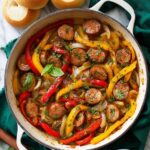
Sausage and Peppers Skillet Recipe
- Prep Time: 20 minutes
- Cook Time: 20 minutes
- Total Time: 40 minutes
- Yield: 5 servings
- Category: Main Course
- Method: Stovetop
- Cuisine: Italian
Description
A flavorful Italian-inspired dish featuring savory sausage links simmered with sweet bell peppers, onions, and a rich tomato-basil sauce, finished with parmesan cheese and fresh herbs. Perfect served in hoagie buns or alongside your favorite starch.
Ingredients
Sausage and Vegetables
- 5 Italian sausage links (20 oz.), mild or spicy
- 1 tablespoon olive oil
- 2 large bell peppers (one red and one yellow or green), cored and sliced
- 1 large yellow onion, sliced
Sauce and Seasonings
- 3 tablespoon tomato paste
- 1 tablespoon minced garlic
- ½ teaspoon red pepper flakes
- ¾ cup low-sodium chicken broth, plus more if needed
- 1 tablespoon balsamic vinegar
- 1 large roma tomato, halved and sliced
- 3 tablespoon chopped fresh basil
- 1 teaspoon dried oregano
- Salt and pepper to taste
Finishing Touches
- ¼ cup finely shredded parmesan cheese
- Chopped fresh basil or parsley for garnish
Instructions
- Brown the Sausage: Heat olive oil in a large skillet over medium heat. Add sausage links and cook, turning occasionally, until browned on all sides, about 8 to 10 minutes. Transfer sausages to a plate, leaving rendered fat in the skillet.
- Sauté Peppers and Onions: Return the skillet to medium heat. Add sliced bell peppers and onion; sauté for 3 minutes until slightly softened.
- Add Tomato Paste and Spices: Stir in tomato paste, minced garlic, and red pepper flakes. Cook and stir for 1 minute to develop flavors.
- Create the Sauce: Pour in chicken broth and balsamic vinegar. Add sliced roma tomato, chopped fresh basil, dried oregano, and season with salt and pepper. Toss the mixture well to combine.
- Simmer with Sausage: Nestle the browned sausages into the pepper mixture. Bring to a simmer, then reduce heat to low. Cover and cook until sausages reach an internal temperature of 160°F and peppers are tender, about 10 minutes. Add an additional ¼ cup chicken broth if sauce needs thinning.
- Rest and Slice Sausage: Remove sausages from the pan and let rest for 5 minutes tented with foil on a cutting board. Keep the pepper mixture warm in the pan covered with the lid.
- Combine and Finish: Slice the sausages and return them to the pan with the pepper mixture. Stir in shredded parmesan cheese and toss gently to combine.
- Serve: Garnish with chopped fresh basil or parsley. Serve warm in hoagie buns or alongside potatoes, rice, polenta, or pasta.
Notes
- Use mild or spicy Italian sausage according to your heat preference.
- If you want a vegetarian version, substitute sausage with plant-based sausage alternatives and use vegetable broth.
- Adjust red pepper flakes to control the level of spiciness.
- For a lower sodium version, check the sodium content on sausage and use low-sodium chicken broth.
- Parmesan cheese adds a savory umami finish but can be omitted for a dairy-free option.
- Sausages must reach an internal temperature of 160°F to ensure they are fully cooked and safe to eat.
- Serve with crusty bread instead of hoagie buns for a gluten-free option using gluten-free bread.
Nutrition
- Serving Size: 1 serving
- Calories: 350 kcal
- Sugar: 5 g
- Sodium: 600 mg
- Fat: 25 g
- Saturated Fat: 9 g
- Unsaturated Fat: 13 g
- Trans Fat: 0 g
- Carbohydrates: 10 g
- Fiber: 3 g
- Protein: 18 g
- Cholesterol: 65 mg

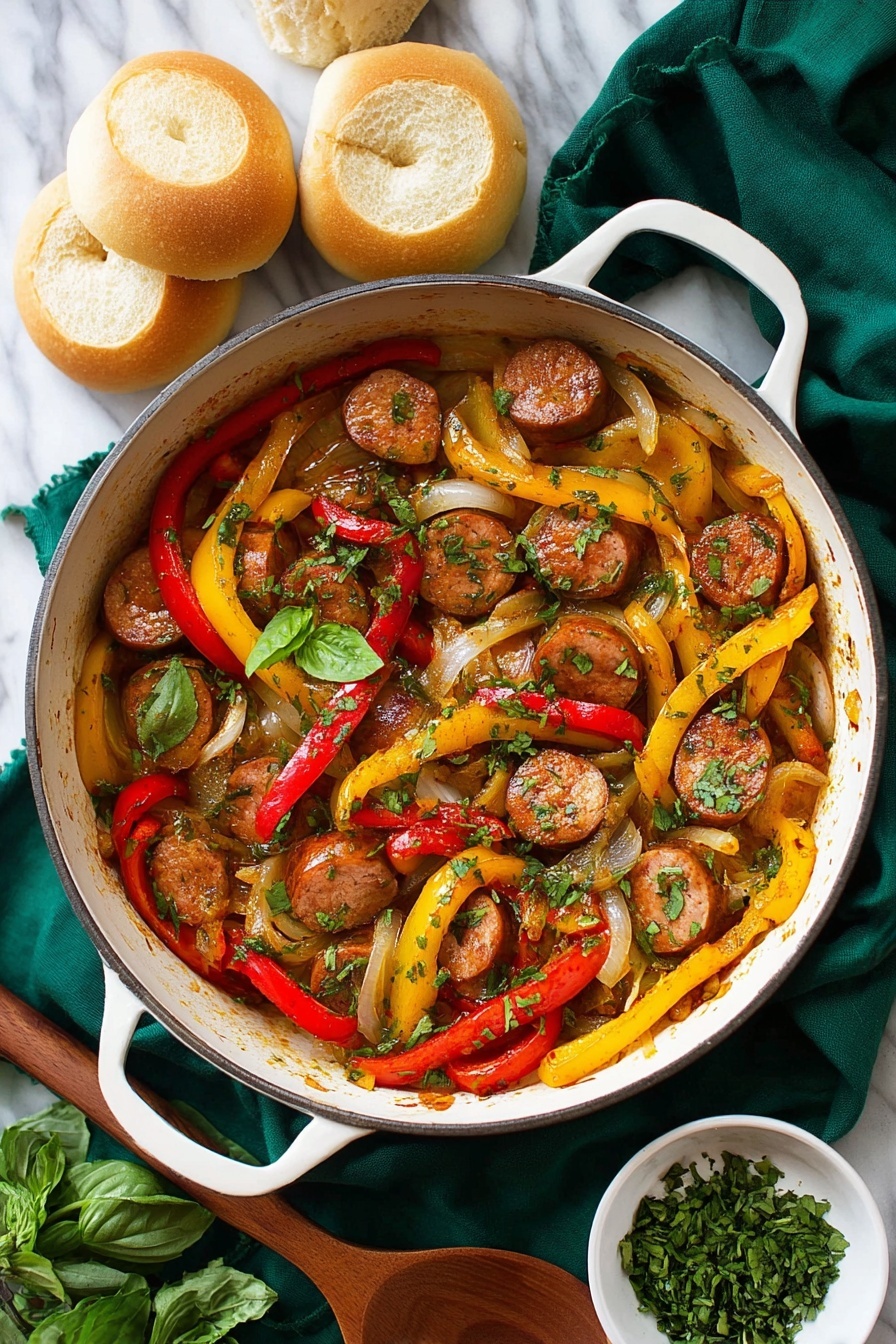
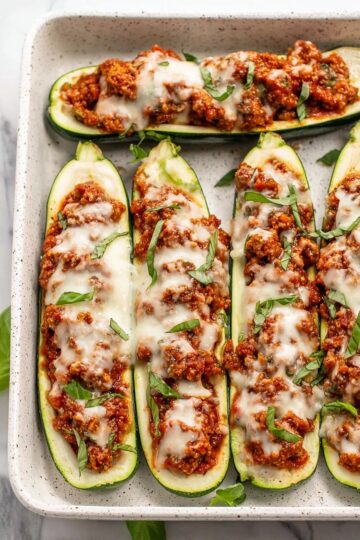




Leave a Reply